With temperatures in the 30’s in Ocala this past week it was no surprise to find our winter mustards making their annual appearance though I call them the Little Mustards. Prime among them is Bittercress, Cardamine hirsuta, sometimes called Hairy Bittercress. Frankly I’ve never found it bitter.
In northern climates Bittercress is a spring time herb growing into summer. Here in Florida it is a fall herb growing into winter. It is also one of the few mustards, if not the only one, you can find growing in very damp or waterlogged soil. Unlike the Western Tansy Mustard which adores dry ground and also shows up this time of year, I’ve always found Cardamine hirsuta in well-watered lawns and landscapes or wet spots. In fact this past summer, which was Florida hot as usual, several of our spring-fed streams dried to a trickle exposing much stream-bed. In the shade of a cypress tree on one of those beds an unusual summer crop of Bittercress germinated. All it needed was a bit of shade — read cooler temperatures — and a damp spot.
Bittercress is naturally leggy, whispy, even at its best at the end of a season’s worth of growth. Its prime use is as an addition to salads or soups, more flavoring than material substance. Cardamine hirsuta is one of those plants that is not substantial enough to sustain you but with it potent flavor it makes eating and thus life better. To read about our small winter mustards click here and here.
There were three nice finds in the Gaineville class. The first was a Yaupon Holly with a lot of berries (which are toxic but attractive.) Usually this time of year the holly tree with the most overt display of berries is the Dahoon, which is of little use to foragers. The Yapon also produces (toxic) berries, usually just a few. But we saw one Yaupon that was unusually fruitful. See the holly key below. Another find was a stand of Ringless Honey Mushrooms, without stems about four pounds worth. I also saw two Ganoderma shelf mushrooms, well-touted for their medicinal uses. Better known as Reishi mushrooms I still have to sort out which species they were. These discoveries are what can happen in a long state with three different climates, temperate, subtropical and tropical.
Mushrooms are normally not part of my classes for a variety of reasons among them most students are just beginning to learn green plants and aren’t ready for non-green ones. Mushrooms require a high level of identification discipline. Small details can mean the difference between a tasty meal, being sick or death. Should you want to learn about an in-season mushroom — note I said learn about, I did not say eat — then the Ringless Honey Mushroom is a good one to start with. Again, note I am not recommending you eat it. I am recommending you study it if you want to move in the direction of learning about mushrooms and identifying them. Why study the Ringless Honey Mushroom? First it is in season across most of the state if not the south. It grows on wood, usually oak stumps, or on buried oak roots. Next it has definite identification elements that don’t require a microscope to sort out. It’s a good mushroom to study to learn the various parts of the plant, the terms, and what they mean. It’s more definite than ambiguous. More to the point learn about it this year and maybe next year when its season comes around again you might be able to identify it with confidence. Mushrooms are a detective story and you cannot miss a single detail. To read more about the Ringless Honey Mushroom go here.
Getting Weeds to Grow when or where you want them to grow can be more complicated than one would think. It usually starts with “why didn’t that wild seed grow?” There is no easy answer. Here’s one guess. You took the wild mustard seed inside for the winter where it would be safe and warm and now it won’t grow because it needed to be outside all winter. Or those ground cherry seeds you so carefully picked and dried before the fruit rotted when the seeds needed to be in that moldy, melting fruit. Maybe you did not soak the poke berry seeds in battery acid to replicate a bird’s gut… Getting seeds — cultivated or wild — to germinate is a complex topic and worthy of entire books. Most of those books are written about cultivated species. But, they are some help to forager who want to sow or grow wild plants because most cultivated species have wild brethren. So the techniques used for say, tomatoes, usually work for ground cherries. There is more to perpetuating plants than just sticking the seeds in the ground. The one book I have on my self for reference is Seed To Seed by Suzanne Ashworth. While it cannot answer all your questions about wild seeds it does provide a lot of guidance.
One of the few foraging disappointments about moving south is Dandelions. The warmer the weather the less they like it. In Florida dandelions are 90-pound weaklings. They are small, scrawny and often sun burnt towards purple, never large luscious and happy. Yet if you look around you can find some this time of year when it is cooler and more to their liking. They are not the luscious love-to-grow plants of northern climes. Here they hide in the grass with only a dandelion blossom to give them away. To read more about dandelions go here.
Don’t forget about the Florida Herbal Conference this February 15-17 and the discount you can get by signing up early and by using the code EATTHEWEEDS. If you register by Dec. 15th and use EATTHEWEEDS that’s a 20% discount. Conferences are so educational and rewarding. You have access to high-quality information and teachers who are experienced at making it enjoyable and understandable. You also spend a few days around other similar-minded folks so you don’t have to explain yourself. You become the majority. For more information and to sign up go to: Florida Herbal Conference.
And now a follow up. You do remember you mother telling you to chew your food properly. Edward Archbold apparently forgot that advice. You remember Ed, the 32-year-old man in Miami who died October 6th after winning a cockroach eating contest. The autopsy report said Archbold, 32, died of “asphyxia due to choking and aspiration of gastric contents,” The report from the Broward County medical examiner’s office said his airway was obstructed by the roach body parts, which prevented him from breathing. Archbold died after eating the roaches as well as worms in a contest to win a pygmy python. He became ill right after the contest and collapsed in front of the store. He was pronounced dead at the hospital. About 30 people downed insects in the contest but none of the other contestants became ill. Remember, children, chew your cockroaches thoroughly.
Foraging classes: I will be having them in Winter Park, near Orlando, and in Jacksonville. Find more details by clicking here.
Because of the interest in local hollies below is a key to them. Like many trees, hollies can be confusing to identify when you finally decided to know your trees better.
Group One
With thin, membranous leaves:
1) Leaves evergreen, entire or rarely denticulate, fruit dull purplish, to black, plants of south Florida only ….. Ilex krugiana
With deciduous leaves
1) Leaves pubescent on most of the upper surface, margins serrate, Leaf blades elliptic with a rounded leaf base, 6-9 cm long….. Ilex amelanchier
2) Leaves smooth on the upper surface, margins crenate to serrate, Leaf blades oblanceolate to ovate, 2-6 cm long, margins crenate ….. Ilex decidua
3) Leaf blades elliptic to ovate, margins serrate to crenate,
3a) Leaves with conspicuous veins, flowers and fruit appear singly or, in clusters up to 3, in the leaf axils….. Ilex verticillata
3b) Leaves without conspicuous veins, flowers and fruit appear, clustered from spur shoots ….. Ilex ambigua
Group Two
Leaves leathery, evergreen
Subgroup A: fruit red to yellow
1) Leaf blade with sharp pointed teeth, these are usually regularly spaced ….. Ilex opaca
2) Leaf blade entire, crenate or serrulate, Leaf blades with a rounded apex ….. Ilex vomitoria
3) Leaf blades with a sharp, pointed apex, Leaf blades 1-4 cm long and usually less than 1.5 cm wide,
margins entire, tip sharp pointed ….. Ilex myrtifolia
4) Leaf blades generally longer than 4 cm and wider than 2 cm, may have a few teeth at the tip or with a single sharp point ….. Ilex cassine
Subgroup B: Fruit black
1) Leaves crenate, leaves often cupped, 3-5 cm long, ….. Ilex glabra
2) Leaves with a few small teeth, leaves somewhat cupped, 4-7 cm long, ….. Ilex coriacea
To donate to the Green Deane Newsletter click here.

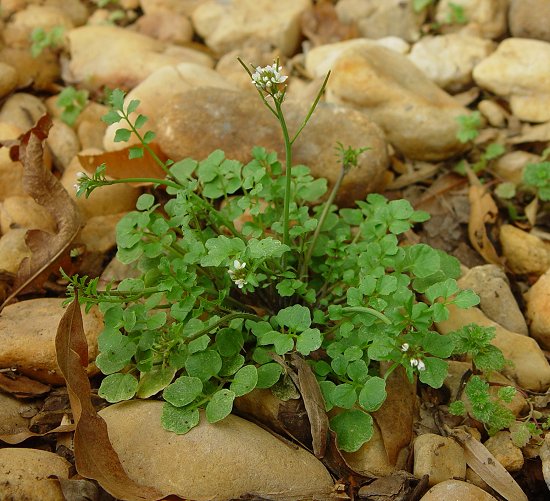
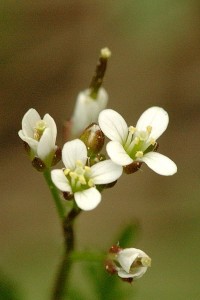
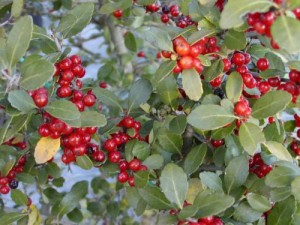
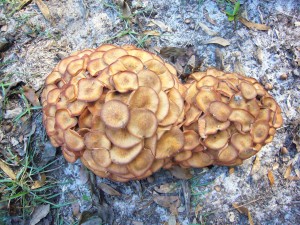
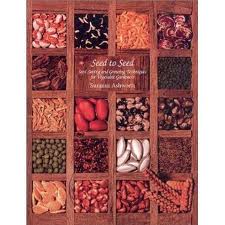
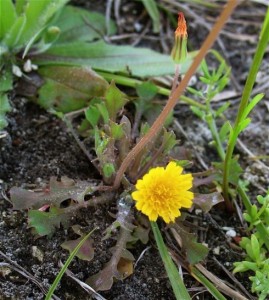


Ringless Honey Mushrooms (a. tabescens) are better and more versatile in the kitchen than the common/ringed honey mushrooms (a. mellea) in my personal opinion. Less mucous-ey. We get a quick flush of them beginning in late August here in Massachusetts – I collected maybe 10lbs this past season. It’s important with the ringless honeys that they be cooked thoroughly (10 mins) or they may cause gastric upset – I made this mistake once. This is true for most any “honey” (armilarria) species – undercooking them can be an uncomfortable experience. They are however some of the easier types to identify – radiating from one point, buff caps with light fuzz/scales, honey-color. Armillaria is a family of mushrooms that you’ll begin to recognize easily once you’re familiar with it’s characteristics. Honeys are best before their caps fully open, but can be eaten at most any fresh stage. Only trim off the dirty parts – keep their long stems attached, they have a nice firm noodle-like texture.
Honey mushrooms make magnificant pickles! We had a huge abundance in early September here in Georgia. They lasted for nearly 14 days in my favorite hunting ground. That’s what I love about mushrooms; you never know what will come up or where… they just surprise you. A few other mushrooms which are easily identified are puffballs and oyster mushrooms.
Sir , indeed ” there is more to perpetuating plants than just sticking the seeds in the ground” . To be brief , let me take just two instnces of my own . The first is of three successive attempts all in vain to grow in my back garden (locality Khartoum – Sudan ) about 100 seeds of pomegranata ( Pumica granatum ) the earliest attempt being at the start of April ( here Summer time ) . I kept watching while giving each attempt more days than the previous till by the end of the rainy season ( almost end of September ) when I replaced the soil by fresh clay Nile soil . This time instead of pomegranata I scattered the much easy to grow “girgeer” ( Arabic name for Arugula , Rocket salad or Eruca sativa ) . How much surprised I was to find after nearly two weeks three good looking pomegranata seedlings prodruding among the well grown “girgeer” ! The second instance concerns the seeds of a plant , quite unfamiliar to Khartoum ;but frequently found on sandy soils in short grassland Savannas . The local name of the fruit is ” gunglaize ” the pulp of which is used in making cold and hot drinks beside its use as folk medicine . The tree itself is called “tabuldi tree ” or the more famous name Baobab (Adansonia digitlata L. ) popular for its very large trunk which when emptied is used by the nomad natives of Kordufan region ( south west of Khartoum ) to store rain water of the rainy season for use during the the dry period -capacity : 10000 to 25000 litres . This is all about the discovery of a seedling of the plant by the end of this rainy season jusst outside my house in a heap of sand with remnants of an old building and garbage . Oh , how wonderful ” creatures ” plants are ! Let us caress them . I am told some of them may even respond to music .